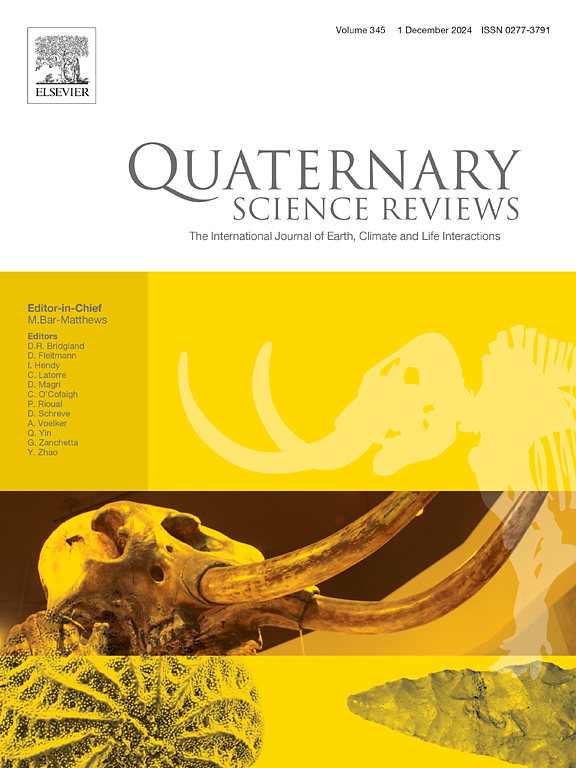Relative summer temperature changes from glacial fluctuations in the Scoresby Sund region, Central East Greenland, during late-glacial time
IF 3.3
1区 地球科学
Q1 GEOGRAPHY, PHYSICAL
引用次数: 0
Abstract
Understanding climate conditions in the mid-to-high-latitude North Atlantic region during late-glacial time can provide valuable information to test hypotheses concerning the mechanisms of climate change that ended the last glacial period. Glaciers (particularly mountain glaciers) are sensitive recorders of summer temperature change because of its influence on the ablation season, snowline elevation and, hence, glacier length. Here, we develop a record of glacial fluctuations in the Scoresby Sund region in Central East Greenland and use these data to infer the timing and pattern of summer temperature changes in the mid-to-high-latitude North Atlantic region. We present 64 new 10Be ages of glacial landforms and remap and recalculate an additional 65 10Be ages from prior work in the region. Even with boulders with inherited nuclides in some of the datasets, a two-step pattern of glacial fluctuations is apparent, with an outer moraine dating to ∼14.0–12.8 ka, an inner moraine dating to ∼11.7–11.3 ka, and ice retreat in the time between moraine deposition. A comparison of these data with 10Be chronologies of mountain glacier fluctuations in Northeast Greenland, Svalbard, Norway and Scotland, shows a consistent pattern throughout the mid-to-high-latitude North Atlantic region of summer cooling and warming during late-glacial time.
格陵兰岛中东部Scoresby Sund地区晚冰期冰川波动引起的夏季相对温度变化
了解中高纬度北大西洋地区在晚冰期的气候条件,可以为验证有关末次冰期结束的气候变化机制的假设提供有价值的信息。冰川(特别是山地冰川)是夏季温度变化的敏感记录者,因为它对消融季节、雪线海拔以及冰川长度都有影响。在这里,我们开发了格陵兰岛中东部Scoresby Sund地区的冰川波动记录,并使用这些数据来推断中高纬度北大西洋地区夏季温度变化的时间和模式。我们提出了64个新的冰川地貌的10Be年龄,并重新绘制和重新计算了该地区先前工作的另外65个10Be年龄。即使在一些数据集中有继承核素的巨石,冰川波动的两步模式也很明显,外部冰碛的年代为~ 14.0-12.8 ka,内部冰碛的年代为~ 11.7-11.3 ka,冰碛沉积之间的时间为冰退缩。将这些数据与格陵兰东北部、斯瓦尔巴群岛、挪威和苏格兰山区冰川波动的10Be年表进行比较,显示出整个中高纬度北大西洋地区在晚冰川期夏季变冷和变暖的一致模式。
本文章由计算机程序翻译,如有差异,请以英文原文为准。
求助全文
约1分钟内获得全文
求助全文
来源期刊

Quaternary Science Reviews
地学-地球科学综合
CiteScore
7.50
自引率
15.00%
发文量
388
审稿时长
3 months
期刊介绍:
Quaternary Science Reviews caters for all aspects of Quaternary science, and includes, for example, geology, geomorphology, geography, archaeology, soil science, palaeobotany, palaeontology, palaeoclimatology and the full range of applicable dating methods. The dividing line between what constitutes the review paper and one which contains new original data is not easy to establish, so QSR also publishes papers with new data especially if these perform a review function. All the Quaternary sciences are changing rapidly and subject to re-evaluation as the pace of discovery quickens; thus the diverse but comprehensive role of Quaternary Science Reviews keeps readers abreast of the wider issues relating to new developments in the field.
 求助内容:
求助内容: 应助结果提醒方式:
应助结果提醒方式:


